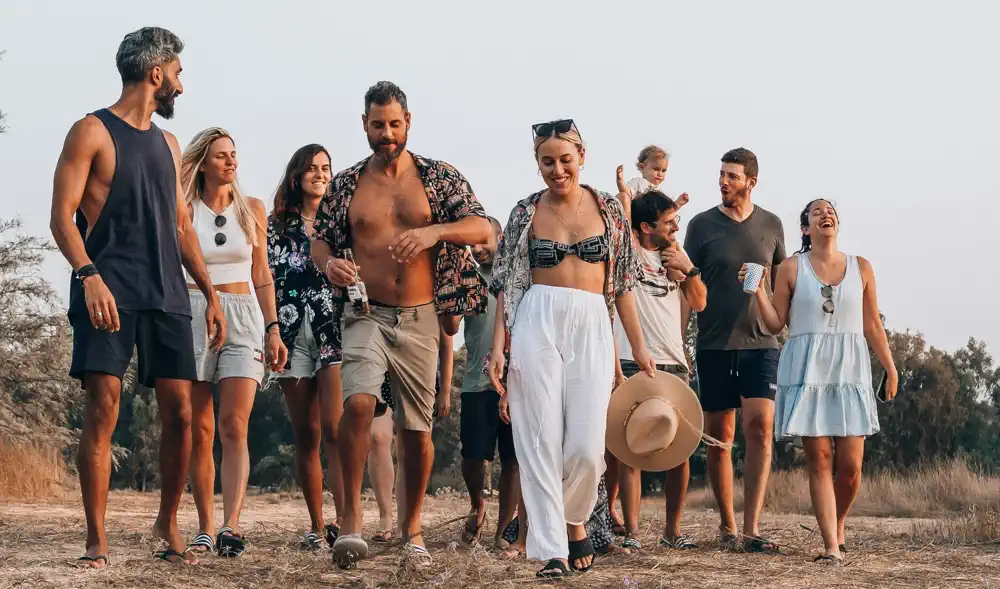
Friend Group Compatibility Test
Returning from a multi-day mountain hike, I was once again convinced that the Socionics Information Metabolism (IM) model is a reliable tool for analyzing compatibility in a friend group. This is especially relevant when planning multi-day trips with friends who haven’t spent extended time together before.
Compatibility in Familiar vs. Stressful Environments
Interacting with friends in a comfortable, familiar environment is vastly different from how relationships evolve under stress. A long trip to an unfamiliar place can expose incompatibilities that were previously hidden.
The key question is: can you test your group’s compatibility in advance? And should you?
A Real-Life Example: How a Conflict Exposed Incompatibility
I recall a two-week trip across Southeast Asia with five friends. Initially, the group appeared cohesive—most of us had known each other for over a decade. However, we had never spent more than an evening together in this specific combination. The result? A surprising conflict arose between me (LSE [ESTj]) and one of my friends (IEE [INFp]).
Later, I used the Socionics IM model to analyze and understand the nature of this conflict.
Group Composition by Personality Types
The group was composed as follows:
- Pair 1:
- Pair 2:
- Pair 3:
Most of the group (except Friend 3 and Friend 4) had known each other since university. Although the composition appeared diverse and intriguing, only one pair represented a true duality—IEE (INFp) and SLE (ESTp).
The Evolution of Friendship and the Impact of Dualization
My friendship with Friend 3 (IEE) began during university. He made considerable efforts to connect with me, using ethical strategies and persistence until he found ways to assist with tasks that aligned with my Business Logic. This laid the foundation of our friendship.
However, the dynamic shifted when Friend 3 entered a relationship with Friend 4 (SLE). The new dual environment allowed Friend 3 to embrace his natural tendencies, which made our interactions more challenging.
The Role of Rationality vs. Irrationality
The dichotomy of Rationality vs. Irrationality was a significant factor in our conflict. For me (LSE), accustomed to structured and logical decision-making, Friend 3’s newfound capriciousness—amplified by Friend 4’s influence—felt irrational and disruptive.
A simple example illustrates this: while choosing a restaurant, I believed decisions should be made collectively or individually without imposing preferences. However, Friend 3, under Friend 4’s influence, became unexpectedly insistent and demanding, which clashed with my expectations.
Key Roles in the Conflict
- IEE (INFp): Empowered by dualization, exhibited carefree and capricious behavior, attempting to dominate group decisions.
- LSE (ESTj): Felt the need to restore "common sense" and order, interpreting IEE’s actions as threats to rationality.
- EII (INFj): Supported LSE’s perspective but took a subtle, background role.
- SLE (ESTp): Reinforced IEE’s capriciousness, creating a dynamic of freedom and irrationality.
- SLI (ISTp) and ILI (INTp): Maintained neutrality, preferring to avoid involvement.
How to Avoid Similar Conflicts
Analysis of my relationship with Friend 3 revealed that our past compatibility relied on his adaptation to my strengths. With a dual partner, this adaptation became unnecessary, leading to a conflict where our Rationality/Irrationality dichotomy played a critical role.
Practical Recommendations
- Analyze Group Composition: Use Socionics to identify potential stress points, especially among dichotomies like Rationality/Irrationality.
- Understand Dualization: Dual pairs can shift dynamics, strengthening individual confidence but potentially destabilizing group harmony.
- Consider Mediators: Neutral participants can de-escalate tensions by stepping in as mediators.
- Prepare for Stress: Recognize that new conditions magnify typological differences, and plan accordingly.
Tools for Compatibility Testing
Use Opteamyzer to evaluate group dynamics. The platform offers tools for creating virtual groups, analyzing type interactions, and predicting potential conflicts using AI.
